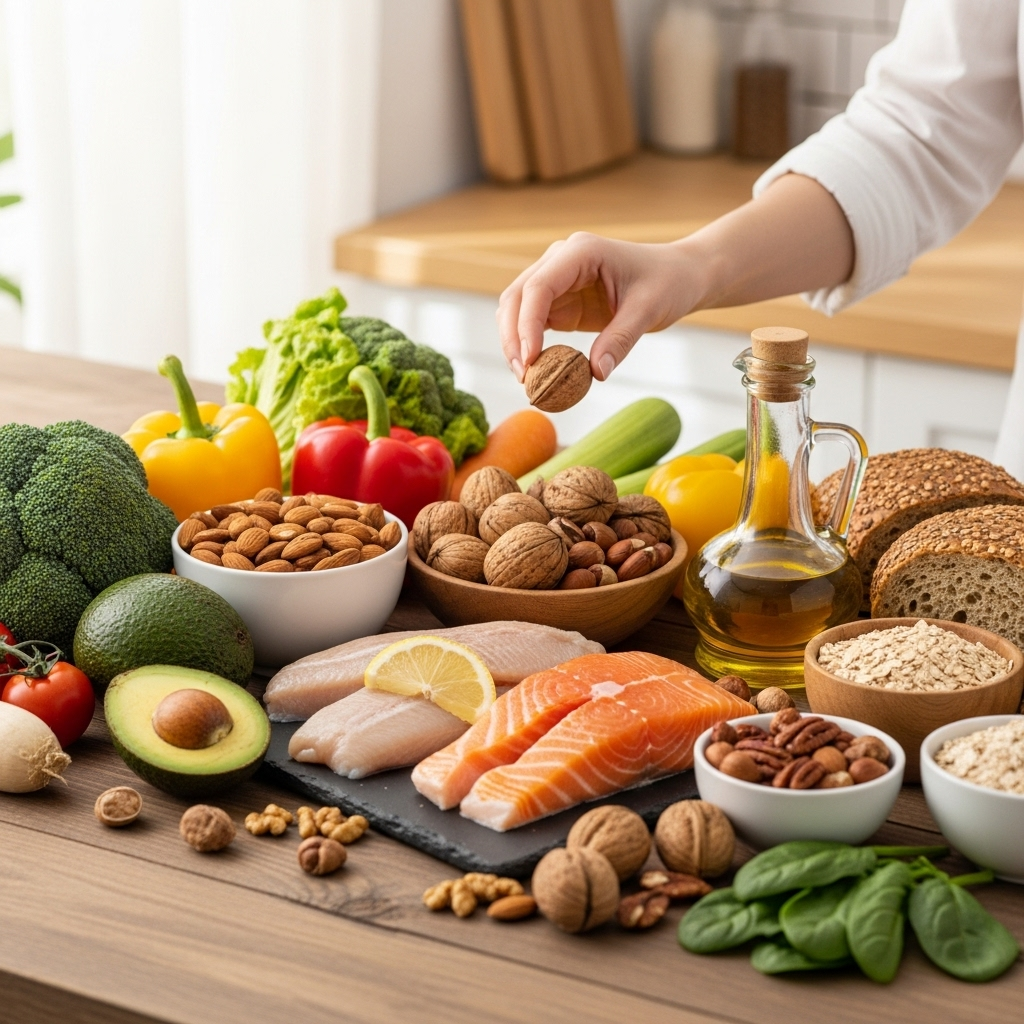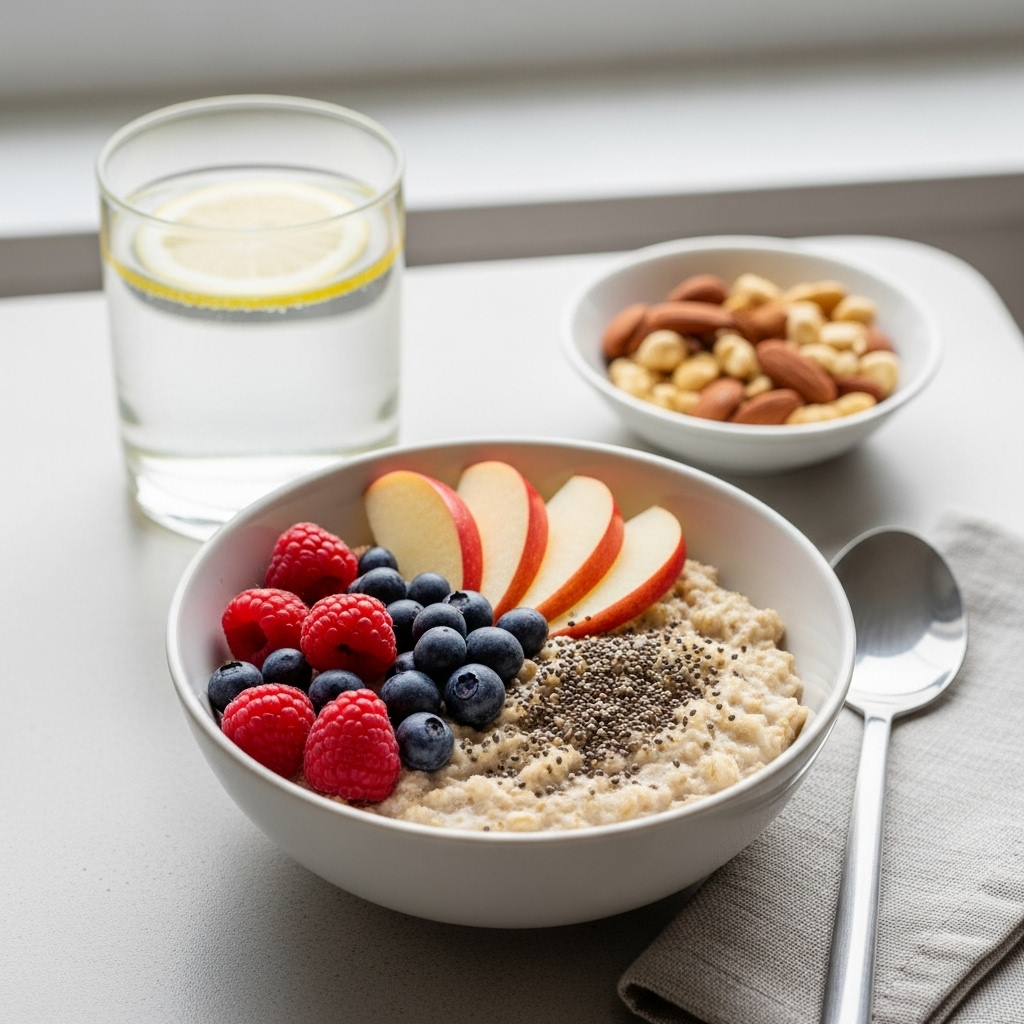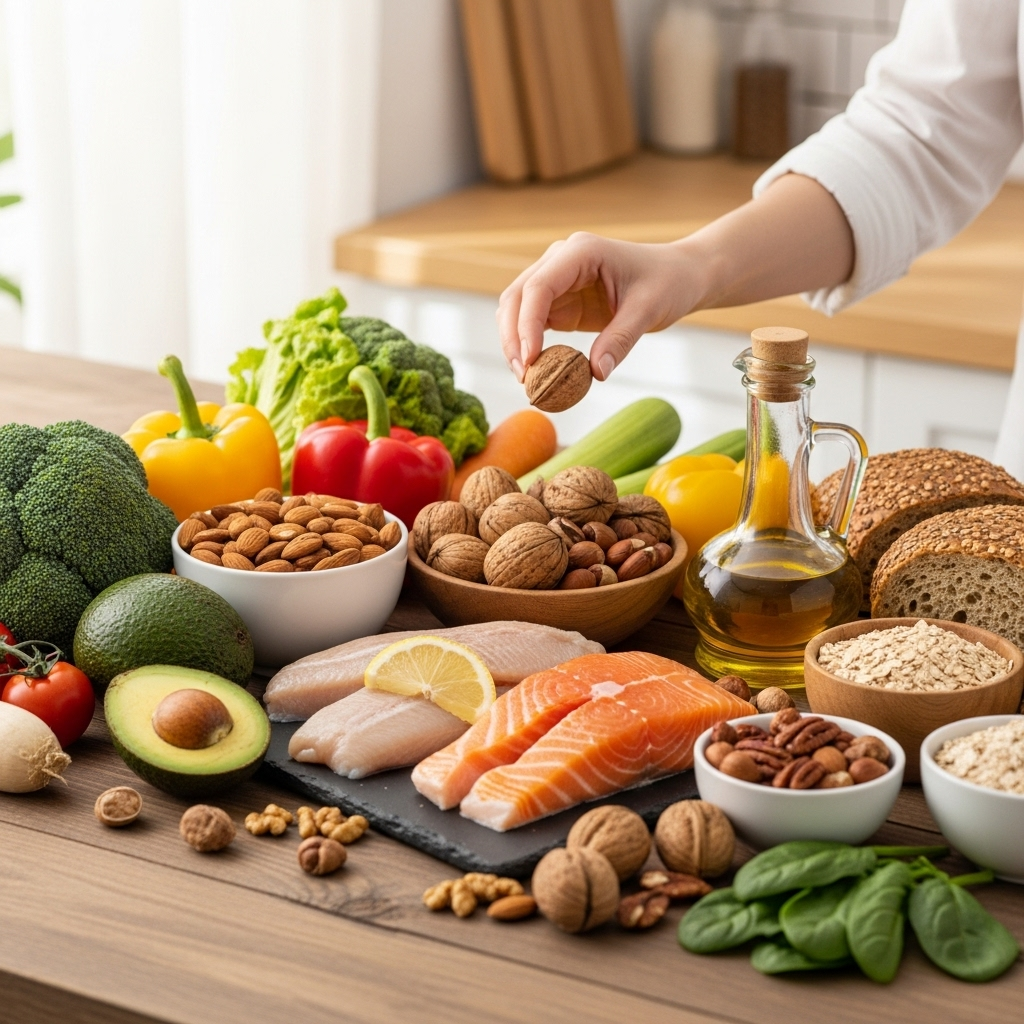Conversations around cholesterol have been oversimplified for decades. We've been conditioned to view cholesterol as inherently "bad," foods containing cholesterol as dangerous, and medication as the primary solution for elevated levels. But as with most topics in health, the reality is considerably more nuanced.
As someone deeply immersed in metabolic health research, I've watched this field evolve dramatically. Today, I want to share a more sophisticated understanding of cholesterol—one that acknowledges its vital role in our bodies while recognizing when and how it becomes problematic.
The Cholesterol Paradox: Essential Yet Potentially Harmful
Cholesterol isn't a villain—it's a vital molecule that our bodies need to function properly. It serves as a fundamental building block for cell membranes, provides the structural backbone for hormones like testosterone and estrogen, and plays a crucial role in vitamin D synthesis and bile production.
The problem isn't cholesterol itself, but rather what happens when LDL particles (often simplistically called "bad cholesterol") accumulate in arterial walls. This accumulation, particularly when the particles become oxidized, triggers inflammatory responses that contribute to atherosclerosis—the progressive narrowing and hardening of arteries that can eventually lead to heart attacks and strokes.
Here's where nuance becomes crucial: standard lipid panels that measure total cholesterol, LDL, HDL, and triglycerides provide useful information, but they don't tell the complete story. More advanced markers like ApoB (apolipoprotein B) and LDL particle number offer deeper insights into cardiovascular risk. ApoB, in particular, represents the actual number of potentially atherogenic particles circulating in your bloodstream—making it potentially more predictive of cardiovascular events than traditional LDL measurements.
Another often-overlooked factor is genetic predisposition. Some people have familial hypercholesterolemia, a genetic condition that significantly elevates blood cholesterol levels regardless of diet. Others may be "hyper-responders" whose blood cholesterol levels rise dramatically in response to dietary cholesterol—a trait that affects approximately 15-25% of the population.

The Diet-Cholesterol Connection: More Complex Than We Thought
Perhaps the biggest paradigm shift in recent years concerns the relationship between dietary cholesterol and blood cholesterol levels. The once-prevailing belief that consuming cholesterol-rich foods like eggs directly raises blood cholesterol has been largely debunked for most individuals.
Why? Because the body maintains sophisticated regulatory mechanisms. When you consume more dietary cholesterol, your body typically responds by reducing its own cholesterol production or increasing cholesterol excretion. This explains why eggs, once demonized for their cholesterol content, are now recognized as nutritious foods that don't significantly impact cardiovascular risk for most people.
The more important factors appear to be:
1. Fat Quality
Not all fats affect cholesterol equally:
-
Trans fats (found in partially hydrogenated oils) are unequivocally harmful—they raise LDL, lower HDL, and promote inflammation and oxidative stress.
-
Saturated fats have a more complex relationship with cholesterol. While they tend to raise LDL cholesterol, the context matters significantly. Saturated fat from ultra-processed foods likely behaves differently than saturated fat from minimally processed sources. Moreover, some saturated fatty acids (like stearic acid) appear less problematic than others (like palmitic acid).
-
Monounsaturated fats (MUFAs) and polyunsaturated fats (PUFAs) generally improve cholesterol profiles when they replace saturated fats in the diet. Extra virgin olive oil, avocados, nuts, and seeds are excellent sources of these heart-healthy fats.
2. Carbohydrate Quality and Quantity
The role of carbohydrates in cholesterol management deserves more attention than it typically receives:
-
Refined carbohydrates and added sugars can significantly worsen metabolic health. Excessive consumption triggers a cascade of events that increases insulin resistance, promotes non-alcoholic fatty liver disease (NAFLD), and generates small, dense LDL particles—the most atherogenic form of LDL.
-
Fiber-rich, minimally processed carbohydrates from vegetables, fruits, legumes, and intact whole grains have opposite effects. Soluble fiber, in particular, can actively improve cholesterol profiles by binding to cholesterol-rich bile acids in the digestive tract, preventing their reabsorption.
Practical Strategies for Optimizing Cholesterol Through Diet
Rather than fixating solely on avoiding foods with cholesterol, focus on these evidence-based approaches to optimize your lipid profile:
1. Prioritize Soluble Fiber
Soluble fiber acts like a sponge, binding to bile acids (which contain cholesterol) in your digestive tract and carrying them out of your body. This forces your liver to pull cholesterol from your bloodstream to create new bile acids, effectively lowering circulating LDL levels.
Great sources include:
- Oats and barley
- Legumes (beans, lentils, chickpeas)
- Psyllium husk
- Chia and flax seeds
- Fruits like apples, pears, and citrus
Aim for at least 5-10 grams of soluble fiber daily (within a total fiber intake of 25-35+ grams).

2. Embrace Anti-Inflammatory, Antioxidant-Rich Foods
Remember, oxidation of LDL particles is a crucial step in atherosclerosis development. Foods rich in antioxidants help prevent this oxidation while reducing systemic inflammation:
- Colorful vegetables and fruits (berries, leafy greens, red/orange/purple produce)
- Extra virgin olive oil (its polyphenols specifically protect LDL from oxidation)
- Green tea and high-cacao dark chocolate
- Herbs and spices (especially turmeric, ginger, and cinnamon)
3. Include Omega-3 Rich Foods
Omega-3 fatty acids, particularly EPA and DHA found in fatty fish, can improve multiple aspects of your lipid profile:
- Reduce triglyceride levels
- Modestly raise HDL in some individuals
- Reduce inflammation in arterial walls
- Improve LDL particle size distribution
Best sources include:
- Fatty fish like salmon, sardines, mackerel (2-3 servings weekly)
- Walnuts and flax seeds (plant-based ALA, which converts to EPA/DHA at low rates)
- For those who don't consume fish, consider algae-based omega-3 supplements
4. Strategic Protein Choices
Protein sources significantly impact lipid profiles:
- Replace processed meats and high-fat dairy with fatty fish, legumes, and nuts
- Consider incorporating some whey protein, which has been shown to improve lipid profiles in individuals with metabolic syndrome
- If consuming animal proteins, emphasize quality (pastured, grass-fed) whenever possible
5. Mindful Carbohydrate Consumption
The relationship between carbohydrates and cholesterol is often mediated through insulin and liver metabolism:
- Minimize added sugars and highly refined carbohydrates
- Focus on whole, intact carbohydrate sources rich in fiber
- Consider your individual metabolic response—those with insulin resistance may benefit from lower carbohydrate approaches
6. What About Alcohol?
The relationship between alcohol and cholesterol is complex:
- Moderate consumption (especially of red wine) may increase HDL and improve insulin sensitivity
- However, excess alcohol consumption can elevate triglycerides and blood pressure
- If you don't drink, don't start for supposed cardiovascular benefits
Beyond Diet: The Holistic Approach to Cholesterol Management
While diet plays a crucial role in cholesterol management, it's just one piece of a larger puzzle:
1. Physical Activity
Regular exercise improves nearly every aspect of lipid metabolism:
- Increases HDL levels
- Improves LDL particle size (shifting toward larger, less harmful particles)
- Enhances insulin sensitivity
- Reduces inflammation
- Lowers triglycerides
Aim for a combination of cardiovascular exercise and resistance training, with consistency being more important than intensity.

2. Body Composition
Even modest weight loss (5-10% of body weight) in those carrying excess adiposity can significantly improve lipid profiles. The location of fat matters too—visceral fat (around organs) is more metabolically harmful than subcutaneous fat.
3. Stress Management and Sleep
Chronic stress and poor sleep can negatively impact lipid metabolism through multiple pathways:
- Elevated cortisol can increase LDL and triglycerides
- Poor sleep quality disrupts glucose metabolism and increases inflammation
- Both contribute to insulin resistance, which worsens lipid profiles
4. Medication When Appropriate
For individuals with strong genetic predispositions or those who have already experienced cardiovascular events, dietary and lifestyle modifications might need to be complemented with medications like statins, ezetimibe, or PCSK9 inhibitors. This isn't a failure—it's a recognition of biological reality.
The Path Forward: Personalized Approach to Cholesterol Management
Perhaps the most important takeaway is that cholesterol management isn't one-size-fits-all. Your genetic makeup, baseline metabolic health, gut microbiome, and lifestyle factors all influence how your body processes dietary fats and maintains cholesterol homeostasis.
This is why regular testing is valuable. Before making significant dietary changes, establish baseline measurements of comprehensive lipid markers (ideally including advanced tests like ApoB and LDL particle number). Then, after implementing changes for several months, retest to assess your individual response.
Remember that the goal isn't simply to achieve a specific cholesterol number, but rather to optimize overall metabolic health and reduce cardiovascular risk. This requires a more nuanced view that takes into account inflammation, insulin sensitivity, blood pressure, and other factors beyond just lipids.
By embracing this more sophisticated understanding of cholesterol metabolism, you can make more informed dietary and lifestyle choices—ones that honor your unique biology while maximizing your long-term health.
References:
-
Ference BA, Ginsberg HN, Graham I, et al. Low-density lipoproteins cause atherosclerotic cardiovascular disease. 1. Evidence from genetic, epidemiologic, and clinical studies. A consensus statement from the European Atherosclerosis Society Consensus Panel. Eur Heart J. 2017;38(32):2459-2472.
-
Soliman GA. Dietary Cholesterol and the Lack of Evidence in Cardiovascular Disease. Nutrients. 2018;10(6):780.






